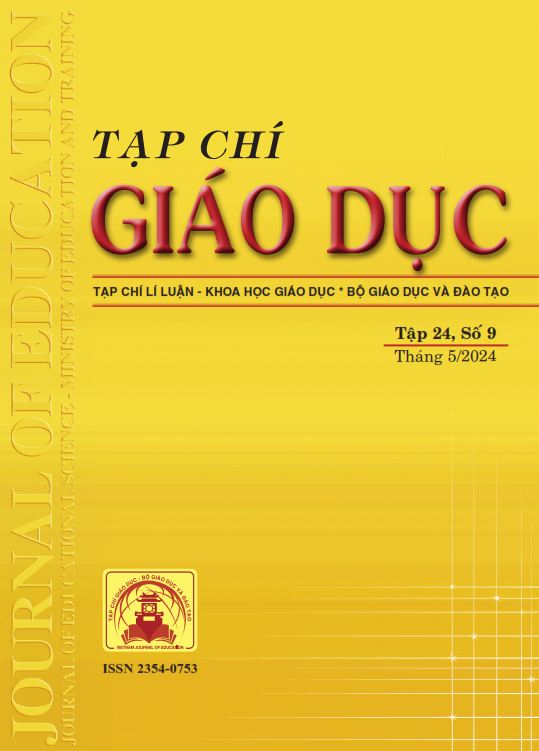Các yếu tố ảnh hưởng đến ý định, hành vi thải loại sản phẩm thời trang có trách nhiệm với môi trường của sinh viên dựa trên Lí thuyết hành vi có kế hoạch (TPB)
Tóm tắt
In recent decades, “fashion waste” and “sustainable fashion” have become topics of large-scale discussion around the world in general and in Vietnam in particular. Based on the extended model of the Theory of Planned Behavior (TPB), this research investigates the factors influencing the disposal behavior of clothing among 808 students in Hanoi. The SEM-PLS analysis reveals that four factors - Attitude, Perceived Behavioral Control, Social Norms, and Personal Norms - significantly impact the intention and behavior of sustainable clothing disposal. Additionally, objective knowledge about sustainable disposal strengthens the relationship between intention and sustainable disposal behavior. The study proposes solutions to enhance awareness and responsibility in individuals' disposal practices. From the research results, it shows that attitudes, subjective norms, perceived behavioral control and personal norms have a positive impact on the intention to dispose of sustainable fashion items.
Tài liệu tham khảo
Ajzen, I. (1991). The theory of planned behavior. Organizational Behavior and Human Decision Processes, 50(2), 179-211.
Anderson, J. C., & Gerbing, D. W. (1988). Structural equation modeling in practice: A review and recommended two-step approach. Psychological Bulletin, 103(3), 411-423.
Bamberg, S., & Moser, G. (2007). Twenty years after Hines, Hungerford, and Tomera: A new meta-analysis of psycho-social determinants of pro-environmental behaviour. Journal of Environmental Psychology, 27(1), 14-25.
Bertoldo, R., & Castro, P. (2016). The outer influence inside us: Exploring the relation between social and personal norms. Resources, Conservation and Recycling, 112, 45-53.
Bianchi, C., & Birtwistle, G. (2011). Consumer clothing disposal behaviour: a comparative study. International Journal of Consumer Studies, 36(3), 335-341.
Bộ Tài nguyên và Môi trường (2021). Báo cáo Hiện trạng Môi trường Quốc gia. https://pcd.monre.gov.vn/Data/files/2023/03/20230217_Bao%20cao%20HTMT%20quoc%20gia%20nam%202021.pdf
Châu Bùi (2021). Ba vấn đề lớn nhất của ngành công nghiệp thời trang. https://chaubui.net/3-van-de-lon-nhat-cua-nganh-cong-nghiep-fast-fashion/
Comrey, A. L., & Lee, H. B. (1992). A first course in factor analysis. New York. Erlbaum.
Hague, P. N., Hague, N., & Morgan, C. A. (2004). Market research in practice: a guide to the basics. Kogan Page Publishers.
Han, H., & Hyun, S. S. (2017). Drivers of customer decision to visit an environmentally responsible museum: Merging the theory of planned behavior and norm activation theory. Journal of Travel & Tourism Marketing, 34(9), 1155-1168.
Jung, S., & Jin, B. (2016) Sustainable Development of Slow Fashion Businesses: Customer Value Approach. Sustainability, 8(6), 540.
Laroche, M., Bergeron, J., & Barbaro‐Forleo, G. (2001). Targeting consumers who are willing to pay more for environmentally friendly products. Journal of Consumer Marketing, 18(6), 503-520.
Leedy, P. D., & Ormrod, J. E. (2001). Practical research: Planning and designing. New Jersey: Merritt Prentice Hall.
Liu, Y., Sheng, H., Mundorf, N., Redding, C., & Ye, Y. (2017). Integrating norm activation model and theory of planned behavior to understand sustainable transport behavior: Evidence from China. International Journal of Environmental Research and Public Health, 14(12), 1593.
Park, J., & Ha, S. (2014). Understanding consumer recycling behavior: Combining the theory of planned behavior and the norm activation model. Family and Consumer Sciences Research Journal, 42(3), 278-291.
Statista (2023). Number of outlets for fashion and apparel chains in Vietnam from 2019 to 2023.
Tải xuống
Đã Xuất bản
Cách trích dẫn
Số
Chuyên mục
Giấy phép

Tác phẩm này được cấp phép theo Ghi nhận tác giả của Creative Commons Giấy phép quốc tế 4.0 .












